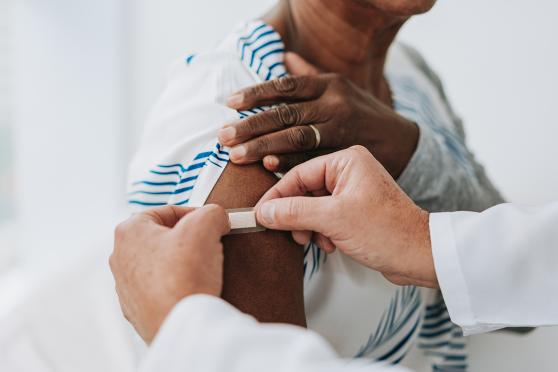Strategies to beat the common cold and keep blood sugar in check
Feeling under the weather can make balancing blood sugar even harder. Follow these expert tips to choose safe cold medicines and prepare with confidence.

For most people battling a common cold, the most typical symptoms to contend with include sneezing, coughing, a sore throat, and a fever. But for individuals with diabetes, managing a cold can mean all those things — plus a spike in blood sugar levels.
“When individuals with diabetes catch a cold, stress hormones can raise blood sugar and interfere with the effectiveness of insulin or other diabetes medications,” says Melissa Young, Pharm.D., a certified diabetes educator and spokesperson for the American Association of Diabetes Educators. “That stress response can lead to severe complications if you’re not careful with the ways you manage your symptoms.”
Left unchecked, spiking blood sugar levels can cause several health problems, including diabetic ketoacidosis or a hyperosmolar hyperglycemic state, which can lead to a diabetic coma.
Stay safe this cold and flu season with these expert strategies.
Have a sick-day plan
Because a cold can wreak havoc on your blood sugar, Dr. Young says it’s important to hash out a “sick-day plan” with your doctor or certified diabetes educator. This plan should cover everything from supplies to have on hand (like glucose tablets or gel) to a list of recommended foods (like broth or applesauce) that are easy to eat or drink when you’re not hungry, but your blood sugar is low. Most important, your plan should include directions from your doctor about how to adjust your diabetes medications (if at all), a list of safe over-the-counter (OTC) medicines, and instructions for when to call for help.
“Don’t stop your insulin or other diabetes medicines unless you’re instructed to do so by your diabetes health care team,” Dr. Young stresses.
Know which cold medicines can disrupt your blood sugar
Many cold medications contain a handful of active ingredients. While some ingredients have little or no effect on blood sugar, others can raise or lower it. “The key is to match the right drug to your cold symptoms and your diabetes care plan,” says Dr. Young. “Ask your doctor or pharmacist to help you figure out which OTC remedies are best for you.”
Dr. Young offers some general medication guidelines for individuals with diabetes:
- Speak up. Always check with your doctor or pharmacist before starting an OTC medicine.
- Ask for sugar-free. Cold medications without sugar are available for most OTC cold and cough syrups, throat lozenges, and cough drops. Ask your pharmacist for assistance with picking out “diabetes-friendly” OTC cold and cough preparations.
- Stay away from nasal decongestants. Common OTC nasal decongestants, like pseudoephedrine and phenylephrine, can drive up blood glucose levels. Try nasal saline drops, irrigation solutions, or nasal strips instead.
- Limit nasal sprays. Decongestant nasal sprays, such as oxymetazoline, can be used for serious congestion. But don’t use these products for more than three days, unless directed by your doctor.
- Try vaporizers and humidifiers. They can (safely) soothe airways and ease congestion.
- Be wary of painkillers. Ibuprofen or acetaminophen can ease headaches, body aches, and fevers — but be careful, as their ingredients may be duplicated in other OTC medications you’re taking, or they may interact with prescription medicines. Check with your doctor or pharmacist first, and do not exceed the recommended dose on the label.
Stay hydrated
Dehydration from a cold can drive up your blood sugar and increase the severity of your illness, so it’s important to drink water throughout the day. Aim for one cup every hour that you’re awake. And be sure to get plenty of rest. Your body needs energy to fight off the illness (and keep your glucose levels stable).


